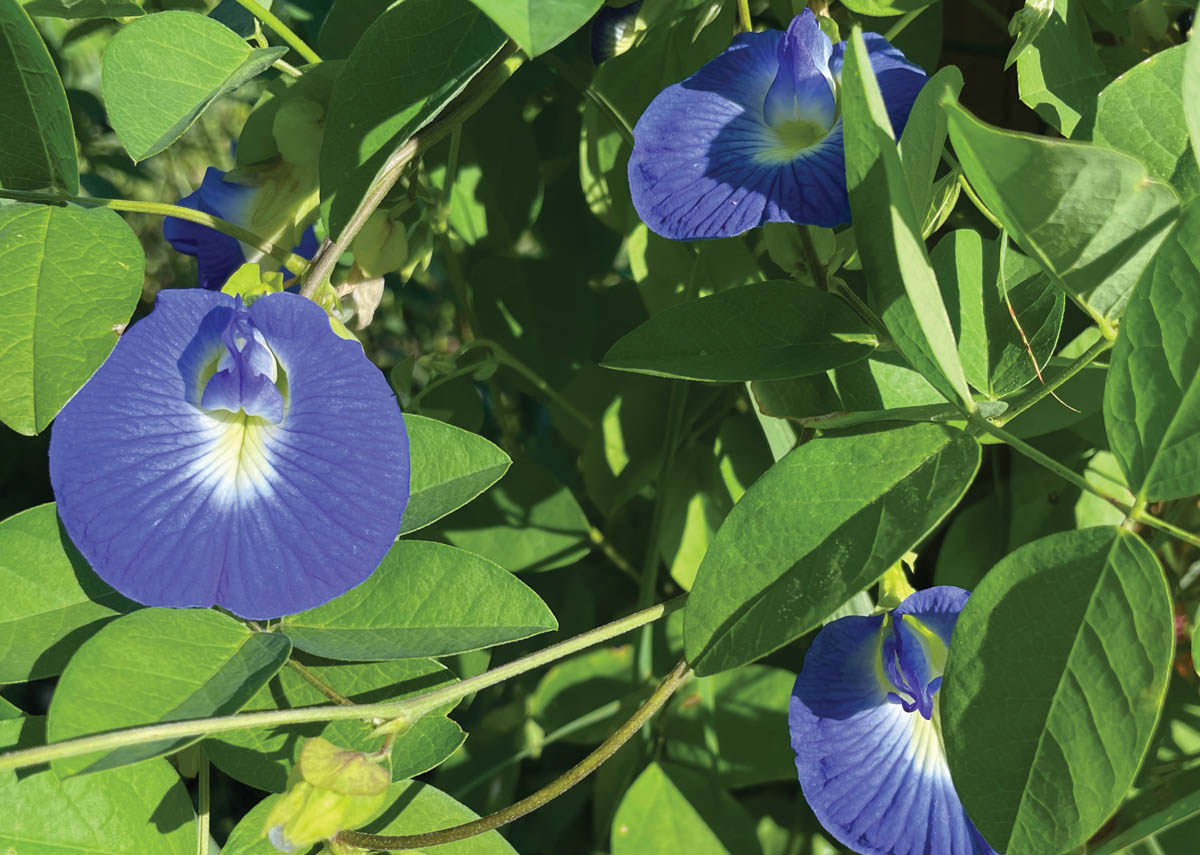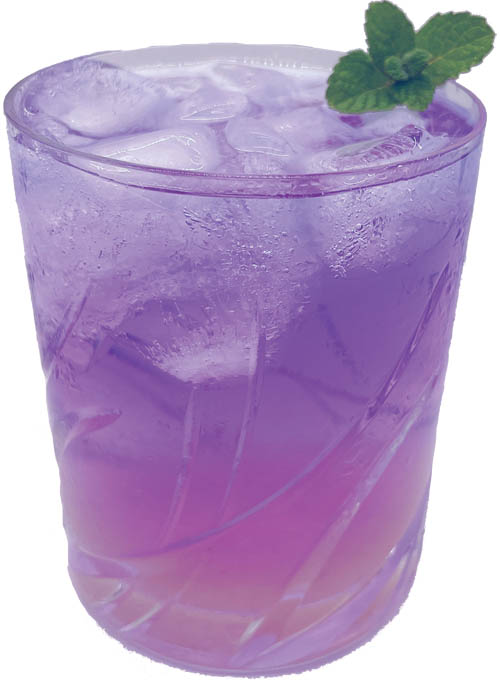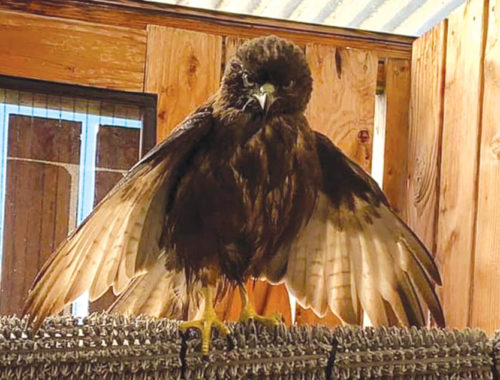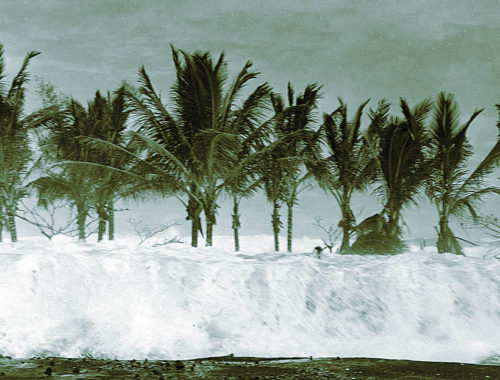
Earth Day Meditation on Food: Recipe for Butterfly Pea Lemonade

By Brittany P. Anderson
Hawai‘i Island is full of astounding wonders. Plants that grow to incredible heights and animals that are infinitesimally small. Some beasts blend seamlessly with their surroundings while flowers bloom in an array of shocking colors to attract attention. When the sun passes through droplets of water to create a rainbow suspended across the horizon, then disappears without a trace, it is hard to ignore the natural beauty of our island home.
Since the dawning of time, people have interacted with their natural surroundings. Cultures formed and passed down knowledge of their environment—from interacting with plants, to navigation by the stars.
When we dive deep into cultural meals, we see an intense relationship between herbs, spices, plants, and sometimes animals. Eating is very intentional—not just replenishing energy—it’s intended to heal. Cultures formed their unique ancestral diets by using the wisdom passed down about their predecessors’ environment. From there, our guts developed specific flora based on our diets, locking them into our DNA.
Today, it seems so hard to envision going into a field and tasting seeds at random or foraging in a forest without having a smartphone in hand to tell if something is poison or not. Imagine taking a tuber that causes a prickling of the mouth, smashing it, fermenting it, and then thoroughly enjoying the potent probiotic known as poi. Can you imagine packing plants in a jar, letting it sit on the counter for months, and then taste-testing whatever came out? Most cannot; however, that’s essentially how kimchi and sauerkraut are made. Our ancestors did most of that heavy lifting for us over thousands of years as they unlocked the potential in what grew around them.
Archeologists constantly unearth what ancient civilizations ate, how they cooked, and why diets shifted over time. Before travel bloggers and food shows, how certain foods became popular in a culture remains a mystery and conjecture. Dieticians are still exploring why one ancestral diet can result in perfect health in one group while making another unhealthy.
Once practical in every sense, eating seasonally is not always in the forefront of our minds when meal planning, because it’s not necessary anymore. Somewhere in the world, peppers (and most everything else) are being grown and transported across the globe to make it to Hawai‘i Island grocery stores year-round. The good news is, with modern greenhouse technology, we’re able to cultivate more food than ever before right here at home.
Reflecting on Earth Day, celebrating our love for our planetary home, it’s a fantastic time to explore our connection with the foods that nourish and heal us. Taking the time to look at why you eat what you eat, where it was grown, and how it got to your plate deepens a connection with the world around you.
The butterfly pea flower is a plant that has been used for centuries as a food, drink, and dye in Southeast Asia. The deep blue color of the flower is seldom found in edible form, making it a unique and rare plant. Used for its natural health benefits and medicinal qualities, the pea flower is often made as a tea sweetened with honey and served hot or cold. All parts of the pea flower plant are used in Ayurvedic and other traditional medicines.
In Hawai‘i the pea flower flourishes on trellises. The soft compound leaves and striking indigo flowers mask fences well. They grow with willful abandon, serving as a constant reminder of the beauty and hidden medicinal potential in the world around us.
Butterfly Pea Lemonade

5–6 butterfly pea flowers
5 cups water
1 cup honey
1 cup freshly squeezed lemon juice
Method
First, make the blue honey water by combining 3 cups of water with honey in saucepan and bring to a simmer. Stir gently and add the flowers. Remove from heat and allow to steep for about 10 minutes. The mixture will turn blue, and the flowers will lose most of their color in the process. While it cools and turns blue, take 2 cups of water and 1 cup lemon juice and combine in a jar or measuring cup. Next, remove the flowers from the cooled blue honey water. Finally, put ice in a glass cup and fill about halfway with the lemon juice, then half with the blue honey water. Watch as the colors change! Garnish with a bit of mint and enjoy.
Note: You can add herbs like lemongrass, ginger, or lavender to the honey water before simmering for an added twist!



